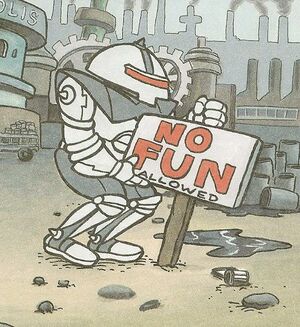- v50 information can now be added to pages in the main namespace. v0.47 information can still be found in the DF2014 namespace. See here for more details on the new versioning policy.
- Use this page to report any issues related to the migration.
User:Ral/Tutorials
Dwarf Fortress started as a pretty complex game back in the days when it was 2D and barely had a quarter of the features it has now. It's easy to get overwhelmed when you first fire it up. Don't worry though, following a tutorial is a very easy way to learn the game in an afternoon.
Don't worry if you don't understand why you do things on your first run, even after reading the tutorial's explanation. If one particular thing bugs you, try starting a new fort and skipping it, then seeing what goes wrong! Especially in the current version, trial and error is great way of having lots of fun.
Installing and running the Game
You can always get the actual game as Toady, the developer, released it from the Bay12 site (check the top of the page).
You can also download the latest version here: Template:News/Mirrors/50.13
The Dwarf Fortress community often creates custom tilesets. They're like graphical mods, they make DF look prettier or just different. A lot of people pack the game folder with the tileset installed and everything already set up, so all you have to do is extract and play. Among the most popular of these are Ironhand's Graphics Set and Phoebus' Graphic Set. There's also the Lazy Newb Pack which has several tilesets and utilities gathered together to make it easier for new players to get started and to experiment with the different tilesets.
Linux
The Linux version of the game is shipped as a compiled 32 bits x86 (Intel/AMD) application. It will also run on a system with a 64-bits AMD or Intel processor and a 64 bits kernel, provided that you have the (32 bits) shared libraries available that the program needs. See the description in 40d:System_requirements#Linux on how to install those libraries.
Starting and learning the game
Most of the tutorials were written for the older (40d) version of Dwarf Fortress. But nonetheless, they are still helpful. If you get stuck within a specific aspect of the game search the wiki and don't hesitate to ask in the forum.
You will probably struggle first with the irrigation of your farm plots. In the latest version of DF you will have to make the ground muddy, before you can plant crops. You should read the irrigation article (probably the easiest way to irrigate is the "Murky Pool Method").
The following Tutorials will walk you through world generation, embarking with your 7 dwarves, game basics, and building a full-fledged fortress.
Recommended tutorials and wiki articles
Still for the 40d Version but really great for the beginning:
For DF2010:
- Bentgirder. A good, mostly-complete tutorial.
- From Caravan to Happy Dwarves. A minimalistic, but great, diagram (maybe for players with a bit more experience).
- Jumping Into Fortress Mode. An outline of main concepts, though it lacks any technical help.
Specific Elements
Basics of world generation
Basics of embarking
Feeding Dwarfs
There are several ways to feed your dwarves. Your initial supplies will run out, but fishing and plant gathering are easy ways to get additional food in a starting fortress. The default embark group starts with a fisherdwarf; you'll need a fishery workshop to clean the fish your fisherdwarf catches, to make them edible. It is very important to have enough Template:L for your dwarves, so building a still is almost a requirement during the first year. Caravans bring some drinks, but not enough.
To ensure sustenance when the fortress grows, farming is the most reliable way. Above-ground farm plots are easy to set up (if you have soil on your map), but require seeds that can be obtained from gathered plants or by trading with humans or elves. Underground farms require mud (easily made with water) and are trickier to set up, but you'll have seeds to plant there. Buying food from traders is a way to prevent shortages.
See also:
- Irrigation and Farming
- Meat industry
- Fishing
- Gathering plants
- Trading for food
- And not to forget: Alcohol
